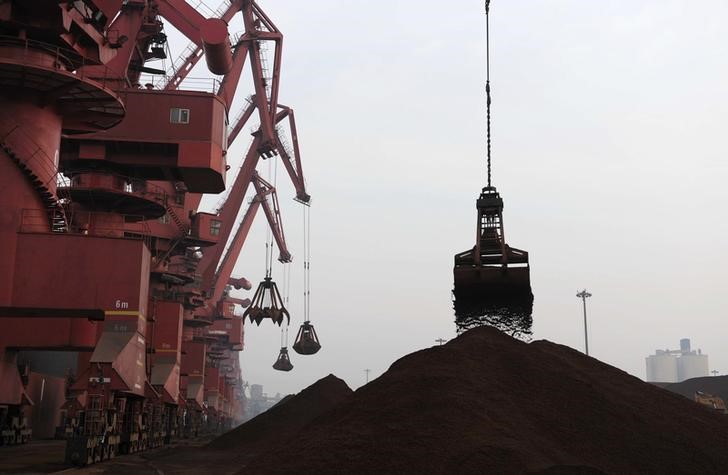(The opinions expressed here are those of the author, a columnist for Reuters.)
* Graphic of China iron ore imports vs. SGX price: http://reut.rs/2zlkFZc
By Clyde Russell
LAUNCESTON, Australia, Nov 7 (Reuters) - There is no sign as yet of a slowdown in China's imports of iron ore, despite an increase in the amount of steel-making capacity being idled as part of efforts to combat air pollution during winter.
It would seem logical that if steel mills are forced to cut production in order to lower emissions, demand for iron ore in the world's top importer would also slow to reflect the reduced steel output.
While this still may occur in coming months, it certainly didn't happen in October, with vessel-tracking and port data compiled by Thomson Reuters Supply Chain and Commodity Forecasts pointing to another bumper month.
China, which buys about two-thirds of global seaborne iron ore, imported 88.2 million tonnes via ships in October, up from seaborne imports of 86.3 million tonnes in September, the data shows.
The vessel-tracking data doesn't align exactly with Chinese customs numbers, given it doesn't capture iron ore imported overland from neighbours such as Mongolia and Russia, and it also doesn't account for some small cargoes from non-traditional suppliers.
However, the vessel-tracking numbers have proven a reliable indicator of Chinese iron ore demand, and the conclusion from the October figures is that there has been no let up in appetite for imported iron ore.
Imports from the top three suppliers to China, namely Australia, Brazil and South Africa, totalled 80.4 million tonnes in October, up from 78.5 million in September. Shipments were the second-highest so far in 2017, behind August's 82 million.
Chinese customs data showed imports from all sources reached a record high in September at 102.8 million tonnes, taking the year-to-date increase to 7.1 percent over the same period in 2016.
The question then becomes at what point, if at all, will China's imports of iron ore start to moderate.
Certainly, there is increasing evidence that steel output curbs are starting to take effect, with the utilisation rate at blast furnaces dropping to 71 percent in the week to Nov. 3, the lowest since at least 2012. major steel-making province of Hebei has cut 25.55 million tonnes of its capacity so far this year, ahead of its annual target, the official Xinhua News agency reported on Nov. 3. will also limit steel and iron output by 50 percent in major producing cities including Tangshan, Handan and Shijiazhuang in the winter period from November to March, Xinhua reported.
IRON ORE STILL LINKED TO STEEL
Given that steel demand remains solid, it's little surprise that output cuts have served to boost prices, with benchmark steel rebar futures SRBcv1 ending at 3,725 yuan ($562) a tonne on Monday, up 2.4 percent from the recent closing low of 3,639 yuan on Oct. 30.
Iron ore prices have traditionally moved more or less in tandem with steel prices, a pattern that has continued so far.
But at some point, the two should diverge as less iron ore is required because of the cuts to steel production.
However, traders appear to be taking the attitude that it's still time to buy iron ore as there will be significant pent-up demand for steel by the time winter ends, meaning that iron ore consumption will be robust by the time steel output curbs are lifted.
This sort of logic is perhaps typical of a market that is seeking a positive narrative in order to justify an ongoing price rally.
It's no secret that markets can trade on sentiment for extended periods even when the fundamentals seems increasingly at odds with the market pricing.
This may be the case with iron ore. It is likely to take actual evidence of a slowdown in buying from China to swing sentiment towards the bears.
<^^^^^^^^^^^^^^^^^^^^^^^^^^^^^^^^^^^^^^^^^^^^^^^^^^^^^^^^^^^ China iron ore imports vs. SGX price
http://reut.rs/2zlkFZc
^^^^^^^^^^^^^^^^^^^^^^^^^^^^^^^^^^^^^^^^^^^^^^^^^^^^^^^^^^^> (Editing by Richard Pullin)
